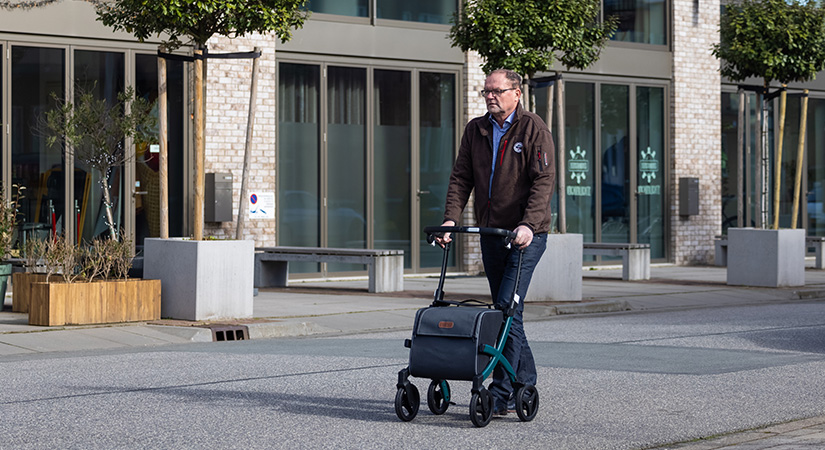Rollators are designed to assist people who require additional support while walking, aiming to supplement their level of mobility to maintain or increase independence. However, there are rollators of inferior quality that pose risks to the users. It is therefore important for healthcare professionals to guide their patients towards good quality mobility aids. This article provides insights and tools to consider when prescribing rollators.
Considering physical and mental conditions
Operating a rollator is a complex motor activity requiring coordination, awareness of the surroundings, and cognitive abilities to navigate and use the brakes when necessary. Learning how to use a rollator safely can be challenging for many people. Therefore, it is important that the user has sufficient sight to navigate, arm muscles to operate the rollator, and back, pelvis, and leg muscles to support the body. It is recommended that each rollator be fitted to the user’s posture, and an extra therapy session should be provided to learn how to use the rollator safely.
The best suitable rollator for someone depends on various factors, such as their living environment, body structure, lifestyle. Overcoming important challenges in the living environment, including narrow doorways, indoor corridors, and outdoor situations, is crucial for safe rollator use. Therefore, it is recommended for a healthcare professional to conduct a home visit, assess the situation, and provide appropriate advice before prescribing rollators to their patients.
If the intention is to use the rollator mainly for walking in the countryside, it is necessary for the rollator to handle various terrains. The choice of tires is particularly important in this case.
The person’s posture should also be taken into consideration. People with more weight require additional support. The weight of the rollator is an important factor for stability and is mainly determined by the material of the rollator’s frame, such as aluminum, plastic, steel, or carbon. Rollators weighing less than 8 kg are considered lightweight rollators, with many new models falling under this category. Traditional rollator models typically weigh around 11 kg. A lightweight rollator is often easier to handle, provided it does not compromise the user’s stability.
The fitness form of the patient may also influence the choice of rollator. If the person needs to rest often, it is important for the rollator to have a stable seat with sufficient back support to prevent falling backward. If the rollator will be frequently used for day trips and vacations, easy folding is a requirement for convenience. A rollator that folds in width is advantageous for transport and storage.
Prescribing rollators or wheelchairs?
Choosing between a rollator and a wheelchair can be difficult. A rollator-wheelchair combination provide an ideal balance between activity and passivity by allowing the user to switch between the two options. A smooth transition from rollator to wheelchair is essential, enabling the user to determine when fatigue becomes a risk and preventing overloading of muscles and joints. Optimizing physical activity is the best way to maintain mobility and independence for as long as possible.
In summary, purchasing a rollator is a suitable solution for individuals facing walking and balance problems. However, due to limited knowledge of available options and incorrect assessment of the physical situation, improper use of rollators can significantly increase the risk of falling. Therefore, it is necessary to provide people with specific professional advice to choose the rollator that fits their needs and offers the most comfort and safety.
